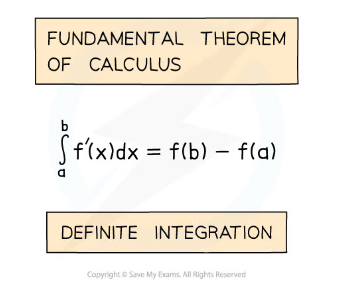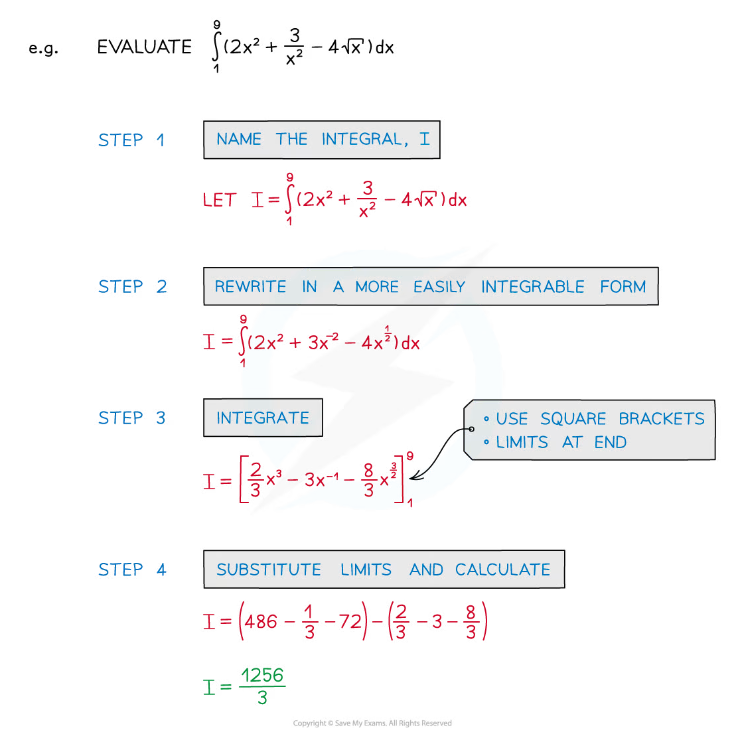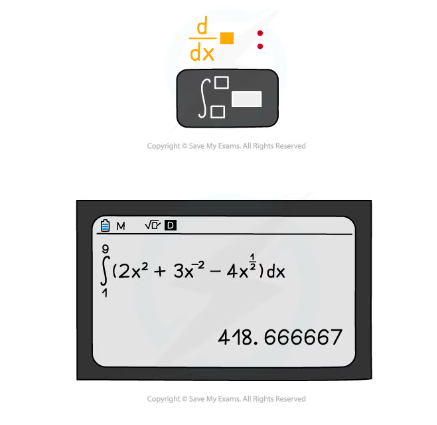- 翰林提供学术活动、国际课程、科研项目一站式留学背景提升服务!
- 400 888 0080
Edexcel A Level Maths: Pure:复习笔记8.1.3 Definite Integration
Definite Integration
What is definite integration?
- Definite Integration occurs in an alternative version of the Fundamental Theorem of Calculus
- This version of the Theorem is the one referred to by most AS/A level textbooks/websites

- a and b are called limits
- a is the lower limit
- b is the upper limit
- f’(x) is the derivative of f(x)
What happened to c, the constant of integration?

- “+c” would appear in both f(a) and f(b)
- Since we then calculate f(b) – f(a) they cancel each other out
- There would be a “+c” from f(b) and a –“+c” from f(a)
- So “+c” is not included with definite integration
How do I find a definite integral?
- STEP 1: If not given a name, call the integral
- This saves you having to rewrite the whole integral every time!
- STEP 2: If necessary rewrite the integral into a more easily integrable form
- Not all functions can be integrated directly
- STEP 3: Integrate without applying the limits
- Notation: use square brackets [ ] with limits placed after the end bracket
- STEP 4: Substitute the limits into the function and calculate the answer

Using a calculator
- Advanced scientific calculators can work out the values of definite integrals
- The button will look similar to:

- (Note how the calculator did not return the exact value
 of the integral)
of the integral)
Exam Tip
- Look out for questions that ask you to find an indefinite integral in one part (so “+c” needed), then in a later part use the same integral as a definite integral (where “+c” is not needed).
Worked Example

转载自savemyexams


最新发布
© 2025. All Rights Reserved. 沪ICP备2023009024号-1








